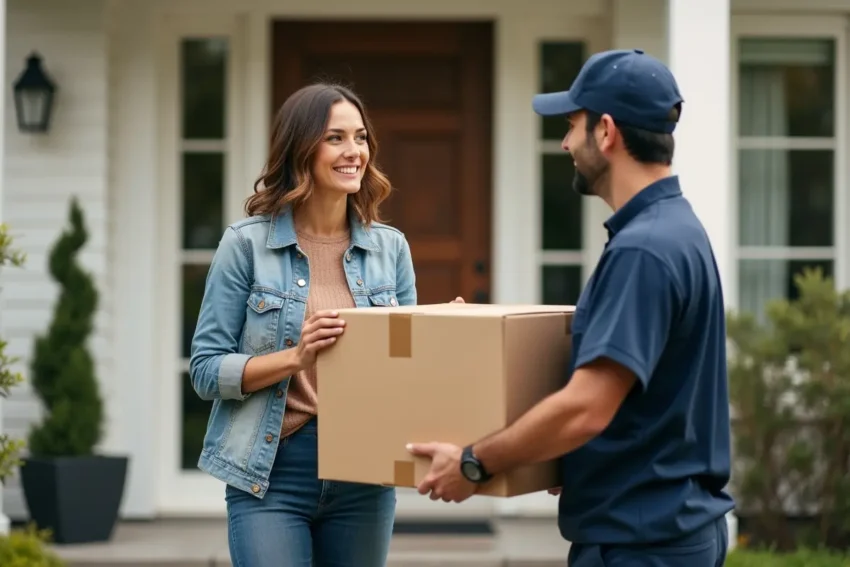In today’s fast-paced economy, businesses are under increasing pressure to deliver products quickly and reliably, meeting consumer expectations. The final leg of the supply chain—the point at which goods reach customers—plays a crucial role in ensuring customer satisfaction and maintaining a brand’s reputation. As e-commerce and on-demand services continue to grow, companies are reevaluating their logistics strategies to improve speed, accuracy, and cost efficiency.
Adopting modern logistics solutions enables organizations to streamline their operations and respond quickly to changing market demands. Utilizing services such as same day courier options helps bridge the gap between warehouses and customers, ensuring time-sensitive deliveries are fulfilled efficiently. By integrating advanced tracking systems, route optimization, and flexible delivery methods, businesses can achieve a balance between operational efficiency and the convenience consumers now expect.
Implementing Micro-Fulfillment Centers
Micro-fulfillment centers (MFCs) are revolutionizing urban logistics. These small, automated warehouses are located near major markets, reducing delivery times and accelerating order fulfillment. They are particularly effective in busy city areas, supporting same-day or even one-hour delivery services. Retailers such as Walmart and Kroger use this approach to meet growing consumer expectations, quickly restocking local inventory and lowering the environmental impact of long-distance transportation.
Adopting Sustainable Delivery Methods
Increasingly, the push for sustainability is shaping last-mile delivery strategy. Electric vehicles (EVs) and autonomous delivery robots—deployed by logistics innovators such as Nuro and Starship Technologies—lower carbon emissions and mitigate the environmental impact of dense delivery schedules.
Incorporating EVs into logistics fleets reflects rising consumer awareness and regulatory requirements for green practices. Forward-thinking brands also use alternative fuel sources and intelligent fleet management systems to meet these obligations and public expectations.
Leveraging Advanced Analytics and AI
Artificial intelligence and predictive analytics are revolutionizing the way businesses navigate last-mile complexity. AI parses real-time factors, such as traffic jams, weather interruptions, and construction, to reroute drivers on the fly, ensuring deliveries are made at optimal times. Additionally, machine learning enhances accuracy in delivery time estimates, thereby increasing transparency for customers.
Exploring Collaborative Delivery Models
Collaborative and crowdsourced delivery programs are broadening business reach and improving efficiency. These approaches utilize adaptable partnerships with local couriers or retail partners to expand the delivery network during busy times. For example, Amazon’s “Hub Delivery” program collaborates with small businesses, optimizing last-mile logistics and supporting local entrepreneurs.
These distributed delivery methods enable companies to handle order spikes more effectively and avoid the bottlenecks often seen in traditional single-fleet systems.
Integrating Public Transportation Systems
Innovative last-mile delivery solutions often leverage existing public transportation networks, utilizing buses, trains, or trams to handle the bulk of urban deliveries. By optimizing package distribution using public transit, businesses reduce dependence on single-use delivery vehicles, thereby lowering congestion and emissions. Research indicates that blending public infrastructure into delivery logistics can substantially cut urban delivery times and operational costs, particularly in highly regulated cities.
Embracing Drone and Aerial Deliveries
The emergence of drones for last-mile delivery is swiftly moving from pilot projects to real-world deployment. Drones enable ultra-fast deliveries in traffic-choked urban centers or remote areas where road access is limited. Companies, including Alphabet’s Wing and Amazon Prime Air, are actively pioneering drone-based logistics, demonstrating how aerial solutions can reshape the delivery experience, deliver medical supplies swiftly, and enhance resilience against ground-based disruptions.
Utilizing Smart Locker Systems
Smart lockers are becoming a central component of flexible, secure delivery models. By positioning these automated lockers at residential complexes, office foyers, or transit hubs, businesses empower customers to collect their packages on their schedule.
Lockers eliminate the hassle of failed delivery attempts, improve efficiency for couriers, and offer an added layer of security for high-value or perishable items. This solution is particularly popular in urban areas with high-rise housing and in regions where porch piracy rates are rising.
Conclusion
The future of last-mile delivery hinges on innovation, speed, and sustainability. Businesses that invest in advanced micro-fulfillment, green transportation, real-time analytics, crowdsourcing, and automated lockers will not only enhance customer satisfaction but also outperform their competitors. By staying agile and responsive to new technologies, companies can meet modern delivery challenges and continue to delight their customers across every touchpoint.

